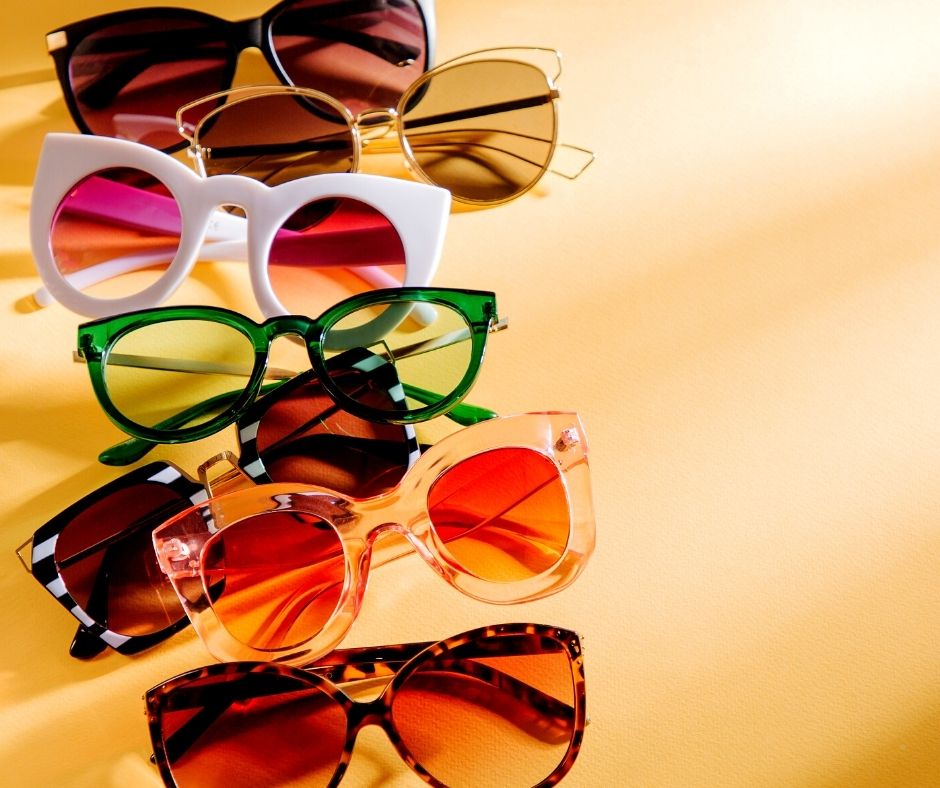-
Health Ailments
- All Conditions A-Z
- Acid Reflux
- ADHD
- Allergies
- Alzheimer's | Dementia
- Borax
- Cancer
- Chronic Pain
- Colds and Flu
- COPD
- Coronavirus
- Crohn's Disease
- Depression
- Fibromyalgia
- Erectile Dysfunction
- Heart Disease
- High Cholesterol
- IBS
- IPF
- Menopause
- Osteoarthritis
- Psoriasis
- Sinus Infections
- Type II Diabetes
How to Choose the Best Sunglasses - Your Eyes Deserve It

When I was 10, I was blind for two weeks. Well, not technically blind, but I couldn’t see. After an eye operation, both eyes were covered for 14 long days. Fortunately, I had family willing to sit and read “girl” books to me!
That experience left me with profound respect and admiration for people who are actually blind and live amazing lives. I also became passionate about protecting one’s vision, especially when I developed cataracts and was forced to stop driving for an extended period.
Cataracts and the subsequent surgery, a miracle unknown to all of the generations of the past, taught me another lesson about the importance of doing all you can to safeguard your vision:
Don’t take your vision and healthy eyes for granted.
Sunglasses Should Do a Lot More Than Make You Look Great
Cheap sunglasses, like those found at a big box store or pharmacy, are the fast-food burgers of the sunglass world. They’re not really good for you, but are quick and easy to buy almost everywhere. Whether getting prescription lenses or the best non-prescription sunglasses, you and your eyes deserve the best protection you can find.
Choosing the perfect frame is important, yes. It’s fun to see how different styles and colors change how the world perceives you and how you feel about yourself. Great sunglasses make almost everyone look better.
However, the frame only has one real function – to hold the lenses in front of your eyes. Whether a top designer frame or a mass-produced cheapie, the frame is really all about the lenses.
UV – Deadly Enemy of Your Eyes
People generally know how Ultraviolet Light (UV) increases the risk of skin cancer and contributes to excessive wrinkling and premature aging of the skin. We use sunblock.
UV damage doesn’t show up immediately but normally happens gradually over time. UV is just as harmful to your eyes as it is to your skin.

Three Types of Ultraviolet Light: UVA, UVB, and UVC
UVA and UVB are year-round threats. UVC radiation is filtered out by the earth's ozone layer so that none reaches the earth's surface.
While we know the UV is beating down a bright, sunny July day, we may not realize that clouds offer almost no protection from UV rays. Winter presents its own UV challenges. Being in the shade offers some protection, but it’s still safest to keep your sunglasses on.
UVA – low-energy radiation
- The most extensive form of ultraviolet
- Not as powerful as UVB
- Can be harmful to the deepest part of the eye, the macula, and your central vision
UVB – the most dangerous form
- Damages the lens and cornea, the shallow parts of the eye
- Causes sunburn, even to the eyes
Three Ways UV Light Can Damage Your Eyes
Below are three common eye afflictions linked to UV exposure, but this is far from a complete list. Developing any of these problems will have a severe impact on your life.
1. Cataracts
My eye doctor commented once that just about everyone will get cataracts if they live long enough. UVB rays hasten the deterioration of the lens, causing increased cloudiness and floaters. As this condition progresses, reading, watching TV, and other vision-dependent activities become more difficult. Driving at night or in the rain becomes increasingly difficult. Without treatment, cataracts lead to blindness.
2. Macular Degeneration
The eyes age just as the rest of the body does. The macula is a converter deep in the eye, changing light and images into nerve signals the brain interprets. Healthy eyes deliver clear, sharp images. UV light accelerates normal aging, causing the central vision to become increasingly blurred.
3. Photokeratitis
Sunburn is a painful reminder of the sheer power of sunlight. Your cornea can also get sunburned, causing eyeball tissue to become inflamed. UV damage can occur in only a few hours.
Photokeratitis can happen any time of the year, particularly if sunlight is being reflected by water, sand, or snow. In fact, up to a startling 80% of UV rays can be reflected, almost doubling the danger to unprotected eyes.
When Buying Sunglasses, You Want 100% UV Protection
Not all sunglasses offer 100% UV protection – this is a must-have. Some sunglasses only substantially less UV protection.
For maximum protection, look for UV 400. Sunglasses with this rating offer superior UV protection; the lens will block all damaging UV wavelengths up to 400 nanometers.
Darker Lenses Are Not Necessarily Better
A light-colored amber, gray or other-colored lens can provide 100% UV protection, but that’s not a given. On the other hand, a super-dark lens may not offer the UV protection you’re looking for. Check the labels.
With Sunglasses, Bigger is Better
- Side protection prevents UV rays from penetrating your eyes from the sides of the sunglasses.
- Wrap-around and oversized sunglasses protect your eyelids as well as your eyeballs.
Look for High-Quality Materials in Both Lenses and Frame
- Glass lenses are excellent as glass has built-in UV protection. However, plastic is less likely to shatter if hit by a hard object.
- Coated plastic lenses can offer as much protection as glass, are lighter and more popular.
- Avoid cheap, brittle plastics. Polycarbonate is an excellent plastic often used for frames and lenses. In fact, durable, strong, shatter-resistant panels and windows in banks and elsewhere are often made from polycarbonate.
- CR-39 is another high-quality, shatter-resistant plastic often used for lenses.
All Tints Are Not Alike
- Grey tints are ideal for driving since brightness is reduced without affecting colors.
- Brown and amber tints reduce glare and blue light.
- Amber, green and gray lenses increase contrast.
- Gradient lenses act like windshields for your eyes. The tint is darker at the top for maximum blocking of sunlight and fades to a lighter tint at the bottom, great for those who don’t like to look through very dark lenses.
- Reduce glare with polarized and anti-reflective lenses. However, polarization does not offer UV protection.
You Don’t Need to Spend a Fortune for Sunglasses With Great UV Protection
You can find attractive sunglasses with excellent UV protection without breaking the bank, sometimes for the price of a restaurant meal. Prescription sunglasses cost more.
If you love your current sunglasses, but you don’t know their UV rating, your local eyewear professional will usually be able to check your sunglasses and let you know how much protection they offer.
Let us know what kind of sunglasses you use to protect your eyes!
About The Author
Mary Post has been researching and writing on health, financial and technical subjects for over thirty years. Health problems suffered by family and friends led to extensive research on health issues, hunting for better answers to their problems. Mary lives near Tampa, Florida.Related Links:
Natural Remedies for Eye Floaters
Natural Remedies for Eye Issues
Natural Remedies for Eye Twitching
Vision Improvement Remedies
Eye Protection
Health Benefits
You must be logged in to this post! Please sign in:


